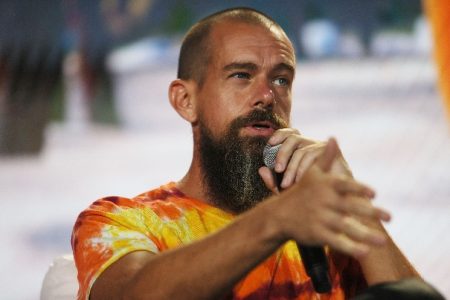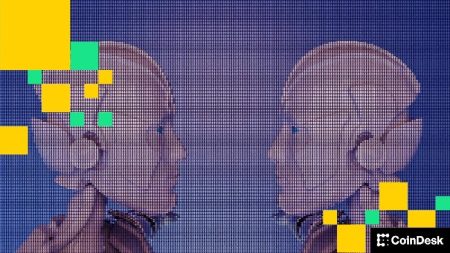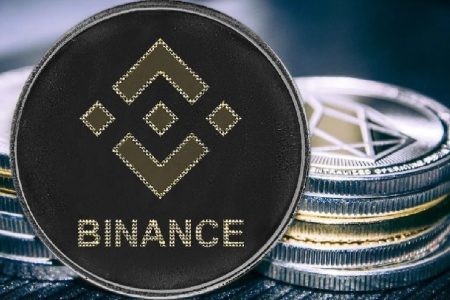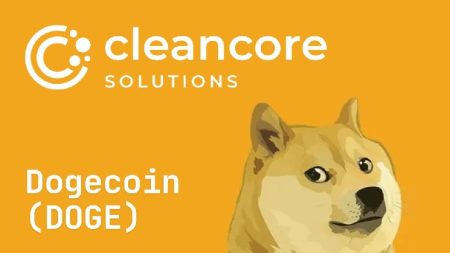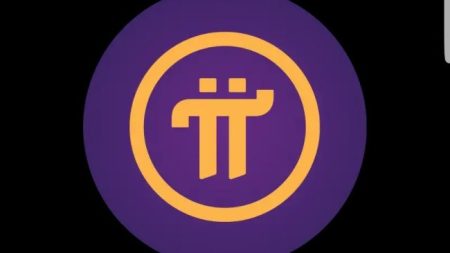The Protocol: Bitcoin Holders Hesitant to Explore DeFi While Ethereum and Solana Make Technical Strides
BTCFi’s Adoption Gap and Blockchain Infrastructure Advancements Dominate Crypto Development News
In the rapidly evolving cryptocurrency landscape, a significant disconnect has emerged between Bitcoin holders and the decentralized finance (DeFi) applications built for them, while Ethereum inches closer to its next major upgrade and Solana-based projects secure substantial funding to enhance blockchain infrastructure. These developments highlight the contrast between technological advancement and actual user adoption in the cryptocurrency ecosystem.
Bitcoin Holders Show Reluctance to Engage with DeFi Platforms Despite Interest
The much-hyped Bitcoin decentralized finance sector, commonly known as BTCFi, faces a significant adoption challenge according to new research. A comprehensive survey conducted by mining ecosystem GoMining revealed that an overwhelming 77% of Bitcoin holders have never even experimented with BTCFi platforms. The study, which gathered responses from over 700 participants across North America and Europe, paints a picture of hesitation despite theoretical interest.
Only about 10% of respondents reported having tried BTCFi services once or twice, while a mere 8% indicated they actively use these platforms for lending or generating yield. This stark contrast between interest and engagement reveals a critical gap in the cryptocurrency ecosystem. As GoMining CEO Mark Zalan explained, “There’s an enormous appetite for these opportunities, but the industry has built products for crypto natives, not for everyday bitcoin holders.”
The data suggests Bitcoin holders aren’t completely opposed to BTCFi’s potential – 73% expressed interest in earning yield through lending or staking mechanisms, and 42% desire accessing liquidity without selling their holdings. However, trust and complexity barriers remain formidable obstacles. More than 40% of those surveyed indicated they would allocate less than 20% of their holdings to BTCFi products, highlighting significant risk aversion even among interested users. This cautious approach suggests that while the technology continues to advance, user education and simplified interfaces may be necessary before BTCFi achieves mainstream adoption among Bitcoin holders.
Ethereum’s Fusaka Upgrade Makes Progress While DoubleZero Launches to Enhance Blockchain Infrastructure
Ethereum’s development continues at a steady pace as its next upgrade, Fusaka, successfully completed testing on the Holesky test network last week. Following just months after the major Pectra upgrade, Fusaka aims to optimize costs for institutional users on the Ethereum network. One of its key innovations is PeerDAS, a feature allowing validators to verify only portions of required data instead of complete chunks (“blobs”), resulting in reduced costs for both layer-2 networks and validators themselves.
Test networks like Holesky serve as critical proving grounds where developers can safely implement and refine new code before deploying it to the main blockchain. Launched in 2023, Holesky has been particularly valuable due to its validator configuration closely mirroring Ethereum’s mainnet. However, the test network has recently exhibited signs of degradation and reliability concerns. Fusaka represents the final upgrade before Holesky’s planned shutdown, which will occur two weeks after Fusaka goes live on the mainnet. The next testing phases are scheduled for October 14 and 28, after which Ethereum developers will finalize the date for Fusaka’s full mainnet implementation.
Meanwhile, the blockchain infrastructure landscape saw a significant advancement with the DoubleZero Foundation announcing its mainnet-beta launch. DoubleZero has created what effectively functions as a “fast lane” for blockchain communications, specifically designed to enhance Solana validator performance. Rather than relying on the public internet’s sometimes unpredictable routes, Solana validators can now connect through DoubleZero’s dedicated fiber pathways, enabling faster transaction processing. In essence, DoubleZero provides a specialized highway system optimized for blockchain communications, addressing the need for near-instantaneous coordination among thousands of nodes that standard internet infrastructure wasn’t designed to support. The project has already gained substantial traction, with 22% of staked SOL currently operating on the DoubleZero network. Industry leaders including Jump Crypto, Galaxy, RockawayX, and Jito are contributing both fiber links and engineering resources, betting that improved network infrastructure will yield benefits as blockchain applications scale to meet growing demand.
Bee Maps Secures $32 Million to Scale Decentralized Mapping Technology on Solana
Decentralized mapping project Bee Maps has secured a substantial $32 million in funding to expand its global contributor network and enhance its infrastructure. The investment round, led by Pantera Capital, LDA Capital, Borderless Capital, and Ajna Capital, represents one of the largest financings in the decentralized physical infrastructure (DePIN) sector this year, underscoring strong investor confidence in the project’s vision and potential.
Built on the Hivemapper network, which operates as one of the largest decentralized physical infrastructure networks focused on mapping data on Solana, Bee Maps leverages AI-enabled dash cams to collect real-time street-level imagery. This innovative approach allows for rapid detection and incorporation of changes to road conditions, including new signage, construction zones, and detours, ensuring digital maps maintain accurate and current information. Contributors to the network receive the platform’s native token, $HONEY, as compensation for submitting valuable mapping data.
The fresh capital will fuel several key initiatives, including broader distribution of data collection devices, enhancement of AI models that process map features, and increased contributor incentives through the $HONEY token ecosystem. Bee Maps has already established strategic partnerships with major industry players like Lyft and Volkswagen’s robotaxi program, providing them with access to its constantly updated mapping data. These collaborations highlight the practical applications and market demand for decentralized, community-driven mapping solutions that can outpace traditional centralized mapping services in terms of real-time accuracy and coverage density.
Tokenization Expands as Regulatory Landscape Evolves for Digital Assets
The tokenization of traditional financial assets continues gaining momentum as KAIO, a firm backed by Brevan Howard and Nomura Bank’s crypto-focused Laser Digital, announced it’s bringing its tokenized funds to the Sei network. Formerly known as Libre Capital, KAIO has already issued over $200 million in tokenized assets, including digital versions of feeder funds from prestigious financial institutions such as Brevan Howard, Hamilton Lane, Laser Digital, and BlackRock. These tokens, available to accredited and institutional investors, enable on-chain subscription, redemption, and reporting functions, streamlining traditionally cumbersome investment processes.
The Sei Network, designed specifically for high-speed financial transactions, provides the technical foundation for these operations. KAIO’s expansion follows a similar move by ARK-backed tokenization platform Securitize, which recently introduced a $112 million Apollo Diversified Credit Fund – a tokenized feeder fund connected to Apollo’s private credit vehicle – to the Sei ecosystem. These developments highlight growing institutional interest in tokenized real-world assets (RWAs), where traditional investments like bonds, credit facilities, and investment funds are represented as digital tokens on blockchain networks.
On the regulatory front, the Bank of England is reportedly planning exemptions to its proposed limits on stablecoin holdings. According to Bloomberg sources, the central bank will grant waivers to certain entities that require large stablecoin reserves, such as cryptocurrency exchanges. Additionally, firms will be permitted to use stablecoins for settlement within the UK’s Digital Securities Sandbox. This represents a moderation of previously reported plans to impose caps of £10,000-20,000 ($13,400-$26,800) for individuals and £10 million ($13.4 million) for institutions. In the United States, SEC Chair Paul Atkins indicated that despite the government shutdown hampering the agency’s rulemaking abilities, establishing an “innovation exemption” for companies building on digital assets and other innovative technologies remains a priority, potentially by year-end or early 2026.
Industry Evolution Continues with Strategic Executive Appointments and Upcoming Conferences
The cryptocurrency ecosystem continues to mature with strategic executive appointments that bridge traditional finance and blockchain innovation. Yuma, a subsidiary of Digital Currency Group (DCG) focused on decentralized artificial intelligence, has appointed industry veterans Greg Schvey and Jeff Schvey as Chief Operating Officer and Chief Technology Officer, respectively. The Schvey brothers bring substantial experience as co-founders of TradeBlock, an institutional crypto data platform previously acquired by DCG, and Axoni, a blockchain infrastructure company serving traditional financial markets whose largest business unit was acquired by the London Stock Exchange Group earlier this year.
These appointments signal Yuma’s ambitions to scale operations across the Bittensor network, including validator, mining, and subnet accelerator initiatives, while preparing to launch a dedicated asset management division. The integration of executives with experience spanning both traditional financial markets and blockchain technology reflects the industry’s continued convergence with established financial systems.
Looking ahead, the cryptocurrency and blockchain community has several significant events on the horizon. The Digital Asset Summit in London (October 13-15) and the European Blockchain Convention in Barcelona (October 16-17) will provide forums for industry leaders to discuss current trends and future directions. Later in the year, Devconnect in Buenos Aires (November 17-22) and Solana Breakpoint in Abu Dhabi (December 11-13) will gather developers and enthusiasts for more technical discussions. The first half of 2026 will be particularly active, with Consensus events in both Hong Kong (February) and Miami (May), EthDenver in February, and EthCC in Cannes scheduled for late March to early April. These gatherings will serve as vital touchpoints for an industry that continues to evolve rapidly despite regulatory uncertainties and adoption challenges.
As the cryptocurrency sector navigates the complex interplay between technological advancement, user adoption, and regulatory oversight, these developments collectively paint a picture of an industry in transition – building sophisticated infrastructure and financial products while still working to bring everyday users fully into the fold.






